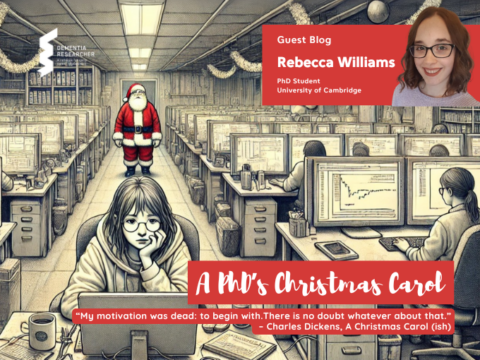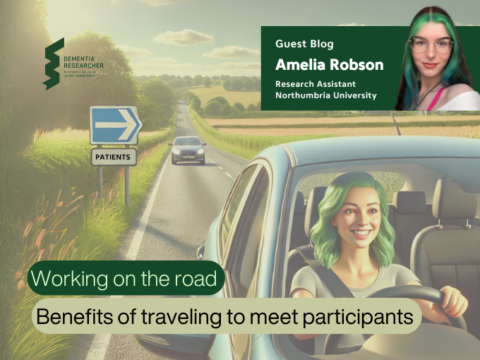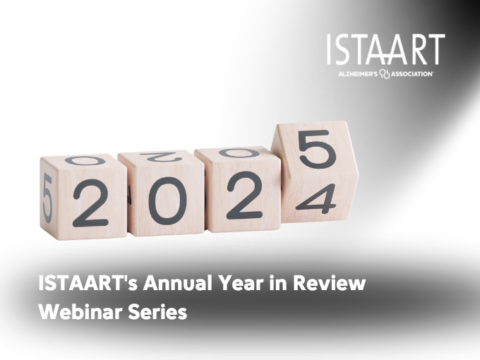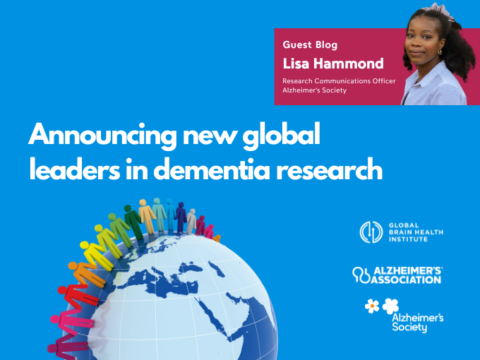It’s not often that you get the chance to be a part of a large, worldwide association in your research field. As someone who has always had a very visceral reaction to the idea of ‘networking’, preferring to read, write and analyse data in some quiet room, the ISTAART ambassador programme was the best possible way to get out of my shell and explore the world of dementia research. When applications opened up, I jumped at the chance.
As my time in this role comes to an end, I’ve been reflecting on all the ways that being an ambassador has opened doors for me, and expanded my view of what research in dementia looks like. This experience far exceeded my expectations, and I’m here to tell you why you should consider becoming an ISTAART ambassador too.
Before applying, I knew a little bit about the Alzheimer’s Association, and about ISTAART – the International Society to Advance Alzheimer’s Research and Treatment. Our lab gets together to watch some of their ‘Introduction to…’ sessions, and we were encouraged early on to follow the professional interest areas (PIAs) and attend their webinars and meetings. But being an ambassador has taught me so much more about ISTAART. I see, now, that ISTAART is a society dedicated to connecting researchers all across the world, and I’ve been so grateful to be a part of it.
So, what is the role of an ISTAART ambassador? Basically, we are a cohort dedicated to spreading the word about ISTAART and its activities. The main event, of course, is AAIC. Now, I had never been to a conference before, and this was a little bit daunting, but being an ambassador helped immensely with giving us the framework to thrive there. To help us stand out as people who were part of the organisation of the conference, we were given purple ISTAART shirts; I cannot overstate the power of these purple shirts.
If I ever felt uncomfortable to approach some big name that I’d seen on a paper, the purple shirt gave me a reason, whether it was to help them set up for a session, give them directions. The purple shirts also got us a lot of questions, like ‘where can I get one?’ and ‘What’s ISTAART?’, which inevitably lead to a conversation about our research, common interests, and so on. The purple shirts took all of the fear out of networking for me.
AAIC was also the first time that I really saw the impact of dementia research on our communities. It’s so easy to get comfortable in the ivory tower, but AAIC was a chance to learn about public engagement and other research areas in dementia. Prior to the conference, I didn’t realise that there was such a wide range of research being done in the design of care homes for people with Alzheimer’s disease, or that there are workgroups of people with dementia that talk with researchers and doctors about what the healthcare system needs to look like for them.
One of the most remarkable aspects of AAIC was the opportunity to connect with a cohort of like-minded early career researchers—the other ISTAART ambassadors. During our intense week of volunteering, we created a supportive group of future collaborators and friends. What made the experience amazing was the camaraderie within the group. Everyone was friendly and helpful, sharing the workload and supporting each other’s work. If you gave an oral presentation, or had a poster on display, you could be sure that other ambassadors would come and ask questions. This laid the foundation for potential collaborations in the future, and I still read all the papers that other ambassadors put out!
But being an ambassador doesn’t end after AAIC. Like I mentioned, one of our main roles was to spread the word about ISTAART and its activities. Each of us found an opportunity to give a presentation in our local communities, with the goal of connecting researchers across the world through the society. We also used our social media platforms, full of new connections from AAIC, to spread the word about events, grants and opportunities. There were also a whole host of exclusive opportunities to get involved in other conferences, collaborations, PIAs and workgroups.
One major benefit was the monthly mentoring and career development sessions with the Alzheimer’s Association staff. For these, they put together presentations about a new topic each month. These covered grant proposal writing, using social media in the research setting, and we even heard from past ambassadors and present association staff about a range of different careers we could go into.
The ambassador cohort, themselves, also found their own ways to connect after AAIC. There were some ‘unofficial’ meetings, including a brainstorming session on ways to improve the ambassador experience for the next year, conversation groups in our many different languages, and coffee chats. We even – across entire oceans – made a video together! Since a master’s degree, PhD, or other academic pursuit can often be quite isolating, having this group is invaluable. We celebrate our successes together, discuss our setbacks, and everything in between. I know now that if I travel to just about any corner of the world, I will be able to find one of my purple shirt friends.
Applications for the 2024-2025 cohort are currently open. So, if you’re interested in this incredible opportunity, make sure to apply by March 8th. If you have any questions about how to apply, or what else to expect, feel free to reach out to me on Twitter or Instagram. I hope you’ll consider becoming a part of something extraordinary.
Don’t believe me? Here is another blog from Dr Beth Eyre who served as an ambassador in 2022.

Sara Zsadanyi
Author
Sára Erzsebet Zsadányi is a PhD Student at the Sant Pau Memory Unit – Neuroimaging Core and Universitat Autonoma de Barcelona. Originally from New Zealand, Sára’s current work focusses on neuroimaging of small vessel disease in Down Syndrome. In previous roles she has worked on healthy brain aging and meditation, and is currently an ISTAART Ambassador.
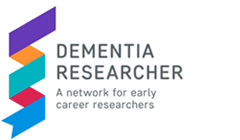
 Print This Post
Print This Post

